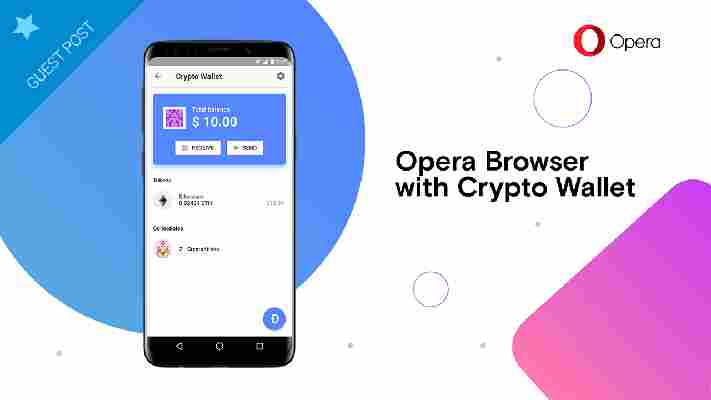Our team is always looking for things we think our readers will value. If we make a content partnership like the one featured in this article, then we may receive compensation for publishing.

Now that the novelty of cryptocurrency has worn off, there is plenty of speculation about what their real-world use cases might look like. Will they replace fiat currency and become a new way of conducting business? Will they be a sort of alternative stock market where investors speculate on the perceived value of different digital assets?
To some degree, probably a little bit of both.
However, the more tangible use case is through the decentralized infrastructure growing up around digital currencies . Blockchain-based games, dApps, digital payments – all expressed through web 3.0 capabilities – are the most practical expression of digital currencies.
If you’re unfamiliar with web 3.0 , you’re not alone. While the jargon hasn’t made it to the popular lexicon yet, its capabilities are, and Opera is leading the charge.
A web browser with more than 320 million global users, Opera is the first to offer web 3.0 capabilities on its platforms through blockchain integration , a native crypto wallet, and growing access to the emerging decentralized ecosystem.
This week, Opera took another significant step in that regard, announcing its plans to integrate TRON into its platform’s built-in digital wallet ( What is TRON? ). Opera’s built-in wallet already supports Ethereum’s Ether token and other Ethereum-based ERC-20 tokens , and the browser intends to add additional blockchain platforms in the next year.
These moves allow users to access videogames, dApps, and online payments directly from their browser, making it incredibly easy for anyone to access web 3.0 functionality.
3 Steps to store and use cryptocurrency with Opera’s wallet
1. Create an Opera Crypto Wallet
While Opera is quickly building an iOS app, it is currently an Android-based service, which is where users start. From there, setting up your wallet is simple .
When generating an account, users receive a 12-word backup phrase that’s used at sign in. This is meant to be the primary security mechanism that protects your account. Opera representatives will never ask for your passphrase , and users are strongly encouraged to store it in a safe location to ensure the integrity of their Opera account.

2. Connect to Your Computers
Opera’s browser works with all major computing platforms, and users can quickly integrate their crypto wallets to their computer browser by adding the Crypto Wallet sidebar .
3. Enjoy Web 3.0 Functionality
Once users set up the browser wallets, they are free to make purchases and to send/receive tokens . Opera applies its Android app as a de-facto two-factor authentication service that users implement to verify transactions.
In this way, users can keep their accounts secure while actively participating in today’s digital environment.
Opera’s wallet detects and conveys ERC-20 tokens , which can be used to make purchases or to complete other applicable transactions. Meanwhile, crypto collectibles , a growing niche among crypto enthusiasts, can also be bought and traded through the built-in wallet.
Complete with a wallet address and a dApp explorer , Opera users are equipped to discover new products, to participate in new ecosystems, and to maintain security and integrity throughout the process.
By bringing these features directly to the desktop, Opera is making the processes of using digital currencies more realistic and simpler than ever before.
While digital currencies will undoubtedly have many use cases in the future, practical and painless usability will play a prominent role in that space.
More about Opera
Why you should upgrade your browser to Opera ►
How to import your bookmarks into Opera ►
How to use the free unlimited VPN included in Opera ►
New Opera mobile browser has some really cool features ►
